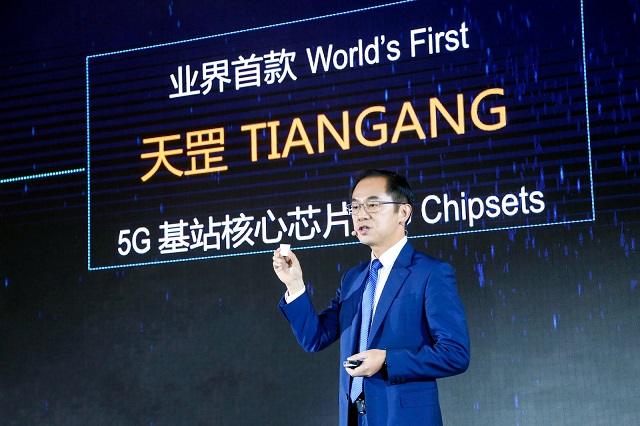In a Beijing press conference on Sunday, Huawei Technologies Co. launched its TianGang chip designed for 5G base stations.
The TianGang chip supports all network standards and all 5G bands including 3.2 and 3.5GHz, as well as C-bands used by commercial satellites. Huawei says that the TianGang chip is highly integrated, which means it supports the integration of active power amplifiers and passive antenna arrays into very small antennas, one of the key building blocks of 5G base stations.
An interesting specification is that the chip also supports 200Mhz high spectral bandwidth. So far, subchannel bandwidth beyond 100Mhz has rarely been mentioned. The chip can control 64 channels at once.
In its press release, Huawei says active antenna units built using TianGang can be 50 per cent smaller, 23 per cent lighter, and can be deployed in half the time it takes to install 4G base stations. This reduces both site acquisition costs as well as installation time.
“Huawei’s full-series, all-scenario simplified 5G products enable ultimate 5G performance and experiences,” said Yang Chaobin, president of Huawei 5G network product line. “These products help significantly boost network deployment and O&M efficiency, and make 5G deployment easier than 4G.”
Huawei claims that it has shipped over 25,000 base stations won over 30 contracts globally. At the time of writing, Huawei has yet to state if these chips will make their way into products outside of China.
Tom Li’s travel and accommodations to cover Mobile World Congress 2019 are paid for by Huawei. Huawei did not have a chance to review or approve content before publication.

